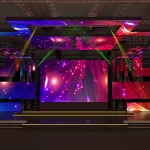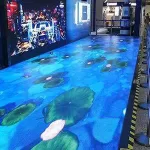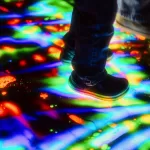In recent years, energy-efficient LED displays have gained significant attention due to their ability to reduce energy consumption while offering superior display performance. As the demand for high-quality displays increases, the need for energy-efficient solutions has never been more pressing. This article will provide an overview of the working principles behind energy-saving LED displays and explore how adjusting certain features, such as brightness and contrast, can optimize both energy consumption and display effectiveness.
1. Understanding the Basic Working Principle of LED Displays
LED displays operate by using Light Emitting Diodes (LEDs) to create bright, vivid images. Unlike traditional displays that use bulky backlight systems, energy-efficient LED displays use individual LEDs as their light source. This allows for better control over the brightness and contrast of the display, ultimately leading to energy savings.
The LEDs in these displays are arranged in a matrix of pixels, which work together to produce images. In an energy-saving LED display, each pixel is capable of independently adjusting its brightness, which enables more efficient power usage compared to older display technologies.
2. Optimizing Brightness for Energy Efficiency
One of the primary factors contributing to energy consumption in LED displays is brightness. While high brightness can improve visibility, it also consumes more power. For an energy-saving LED display, the key is finding the optimal balance between sufficient brightness and energy conservation.
Reducing the brightness to the minimum required for comfortable viewing can result in significant energy savings. Most modern energy-saving LED displays come equipped with brightness adjustment features, which can be automated based on ambient light levels. For example, a display may automatically reduce its brightness in low-light environments, thus saving energy without sacrificing visual quality.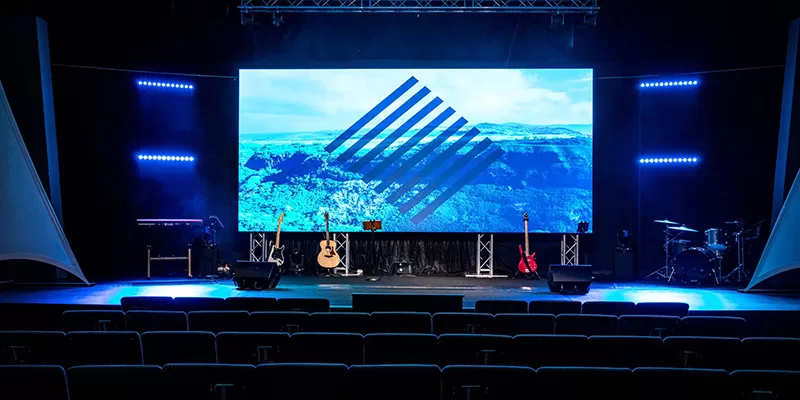
3. Adjusting Contrast to Enhance Visual Quality and Save Energy
Alongside brightness, contrast is another essential factor in display performance. In an energy-efficient LED display, adjusting the contrast ratio not only affects the quality of the displayed image but can also impact energy consumption.
Higher contrast ratios can make the image appear sharper and more vivid, but they may require more power to achieve the desired effect. By optimizing the contrast settings, users can maintain a visually appealing image while using less energy. In many cases, energy-saving LED displays have built-in features that automatically adjust the contrast based on the content being displayed. This dynamic adjustment ensures that the display remains clear and bright while using the least amount of energy necessary.
4. Reducing Power Consumption with Smart Dimming
Smart dimming is a feature that allows energy-saving LED displays to automatically adjust the brightness levels depending on the content being shown. For example, when displaying darker images or videos, the display can dim the backlight, reducing energy usage without compromising image quality. Conversely, when brighter content is displayed, the backlight can be increased to enhance visibility.
This technology not only reduces energy consumption but also prolongs the lifespan of the display, as the LEDs are not constantly operating at maximum brightness. Smart dimming is a powerful tool for optimizing both performance and energy efficiency.
5. Advanced Power Management Systems
Many energy-saving LED displays come with advanced power management systems that actively monitor and optimize power usage. These systems can detect when the display is idle or not in use and reduce the power consumption accordingly. Additionally, these systems can identify energy-saving opportunities by dynamically adjusting the power used by different display segments.
For instance, certain sections of the display, such as the edges or background areas, may not require full brightness and can be dimmed or turned off to save power. Such intelligent systems ensure that energy-saving LED displays provide the best possible performance while using the least amount of energy.
6. How to Choose the Right Energy-Saving LED Display for Your Needs
When selecting an energy-saving LED display, it’s important to consider the specific features that affect both energy consumption and visual quality. Look for displays with:
Automatic brightness adjustment: Ensures that the display only uses as much power as needed.
Smart contrast settings: Optimizes visual quality without excessive energy use.
Advanced power management: Reduces power usage when the display is not in active use.
Energy-efficient components: Make sure the LEDs and other components are designed to minimize energy waste.
At D-King, we specialize in providing energy-saving LED displays that offer customizable features for both energy efficiency and top-notch display quality. Our displays are designed with advanced power-saving technologies, ensuring that your display needs are met without compromising on performance. We also offer tailored solutions to suit different business and environmental requirements, providing you with an energy-efficient display that meets your specific needs.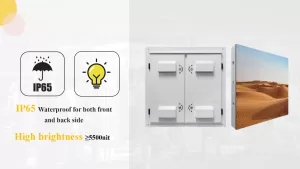
7. The Future of Energy-Saving LED Display Technology
As technology advances, we expect further improvements in energy-saving LED display technology. Innovations such as OLED (Organic LED) displays, micro-LED technology, and even more efficient power management systems are likely to continue driving down energy consumption while enhancing image quality. With these innovations, energy-saving LED displays will become even more integral in reducing energy use across various industries, from advertising to entertainment and beyond.
Zaključak
In conclusion, energy-saving LED displays offer a significant opportunity to reduce energy consumption while still delivering outstanding display performance. By optimizing factors like brightness, and contrast, and using smart dimming technologies, businesses and consumers can enjoy visually stunning displays with lower energy usage. At D-King, we provide customized energy-saving LED displays designed to meet your specific needs, helping you reduce energy costs while enhancing the quality of your visual experience.



